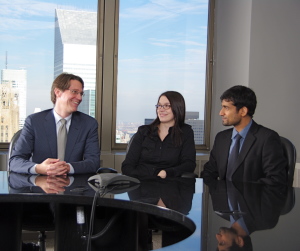
“The difference between an amateur and a professional is in their habits. An amateur has amateur habits. A professional has professional habits. We can never free ourselves from habit. But we can replace bad habits with good ones.” —Steven Pressfield
By Elizabeth Stincelli, DM
Why Develop Healthy Habits?
Do you want your organization to play the role of amateur or the role of professional? Bertrand Russell explained, “Right discipline consists, not in external compulsion, but in the habits of mind which lead spontaneously to desirable rather than undesirable activities.” Habits give your brain a rest by putting some things on autopilot. Why not develop the habits within your organization that lead to right decisions and action on an almost unconscious level?
When you develop a habit, you create a connection between a specific situation and a resulting action. Why not make it easier for your employees and management to do the right things and make good decisions and harder to do the wrong things? Because habits become instinct, they eliminate the tendency to over think. Your values drive your culture and set the priorities that provide a framework for decisions and actions. Why not use habits as a tool for achieving the behavior you want within your organization?
Consistency
Stephen Covey explained, “Our character is basically a composite of our habits. Because they are consistent, often unconscious patterns, they constantly, daily, express our character.” What character has your organization developed? When you develop healthy habits throughout your organization, you improve consistency in your behaviors. These healthy habits improve the character and reputation of your organization. The consistency created by the habits you develop makes it much easier to predict where you are going and how you will get there.
When you develop a positive culture, your employees love what they do, they love their clients, and they work together toward the same, shared vision. With healthy organizational habits you can empower your employees to act, knowing their actions and decisions will be consistent with the vision of the organization. The consistency which results from these habits increases the ability to accelerate problem solving and decision-making. Use habits to establish consistent core principles that reinforce organizational knowledge and clarify beliefs. This will allow you to streamline your business operations. Make sure your culture and habits mirror your mission and cultivate strength in your core beliefs.
Free up energy
Ralph W. Sockman said, “Good habits, which bring our lower passions and appetites under automatic control, leave our natures free to explore the larger experiences of life. Too many of us divide and dissipate our energies in debating actions which should be taken for granted.” How much energy can you free up in your organization by developing healthy habits? When your employees have healthy habits to operate by it frees up energy to be put towards their passion and gives life to creativity and innovation. Use the extra energy to ask the silly questions and perform the crazy experiments that may lead to incredible break-throughs.
Increase energy by developing and nurturing a culture and habits where employees are trained, equipped, and encouraged to think for themselves. When you instill good habits in your organization you can feel confident allowing employees the leeway to explore new ideas and expand thinking. Make sure the healthy habits you develop are all inclusive where everyone feels they are part of the greater whole. Use your extra energy to rally your people around a big idea but leave space for inspiration and the opportunity to think differently. Use habits to create a culture of gratitude where employees are energized and excited about the work they do.
How Do We Do It?
Culture is a deeply held and widely shared set of beliefs, norms, and assumptions that work together to make specific behaviors and outcomes more likely. Organizational culture starts with shared beliefs which influence the habits employees develop. These habits will play a big role in how employees think and act. The habits you develop should be clearly based on what you believe since they will be the foundation for behaviors, actions, and decision-making.
Culture has to be continually managed, refreshed, and refocused to maintain healthy habits. Success is no longer guaranteed by just attracting the best people and investing in innovative ideas; your culture must emphasize and reward healthy habits. Promote a positive and opportunity focused attitude at all levels of the organization. Develop habits that inspire people, focus them on a shared mission, and give them a sense of purpose. With the right support and habits, your people will be willing to move mountains to achieve a shared vision.
The process
As A. P. J. Abdul Kalam explained, “Excellence is a continuous process and not an accident.” If you want to develop healthy habits in your organization, you will have to devote conscious effort to it. In his book The Power of Habit, Charles Duhigg lists the three step process that plays into the phenomena of human habits. First, there is a prompt that triggers a specific behavior. Second, there is a behavior routine that is triggered. And third, there is a psychological reward for performing the behavior.
If you want to change habits you must introduce a different routine. You must first identify the prompts that lead to the unwanted behaviors. Then, discover which rewards are associated with those behaviors. Finally, you can implement alternative routines which offer similar rewards. While the process listed here is generic, it applies to all habits. If you look closely, you will see it at work in your organization. With a little planning, you can use this process to your advantage in developing the healthy habits that bring about the desired behaviors in your organization.
Behaviors
Margaret Mead said, “Our humanity rests upon a series of learned behaviors, woven together into patterns that are infinitely fragile and never directly inherited.” The actions and decisions of your employees within the boundaries of your organization are based on the behaviors they have learned over time. These behaviors create patterns of action, which represent habits, in your organization and must be deliberately created if you want any influence over the behaviors and actions of your employees.
Design a culture that develops habits which are aligned with team, organizational, and individual values so that behaviors are predictable and consistent. Develop a shared meaning for success to ensure all decisions and actions are directed towards the same goal. Create a supportive environment where both individuals and the organization benefit. Once you have the right values and habits in place you can rally employees around a shared sense of purpose and mission. To get the behaviors you are seeking, develop habits that put your people before your strategy. Listen to the voice of your employees, build your team, play to their strengths, and then learn to get out of the way and let them run with it.
Don’t approach the development of healthy habits by asking yourself how you can repair what you’re doing wrong. Instead, start asking yourself how you can build on what you’re already doing right. Take a long-term perspective to identifying the habits that will serve your organization best. Trust that your healthy habits will turn obstacles into opportunities to innovate and grow. Use your culture and organizational habits as tools to reinforce skills and clarify knowledge. Habits are based on action not just words, so lead by example. Remember to celebrate the little successes. If you want to transform your organization, you must set your sights on a higher purpose and place a priority focusing on the health of the habits in your organization.
What Habits Will You Choose?
Benjamin Franklin explained, “Your net worth to the world is usually determined by what remains after your bad habits are subtracted from your good ones.” Do the healthy habits in your organization outweigh the bad? If you want to get new behavior from your employees you must change their habits. What beliefs and habits will produce the behaviors that will cause your organization to thrive?
Cultivate a culture that allows employees to play an important role in something big and meaningful. Then, develop the healthy habits that will produce the desired decisions and actions. Brian Tracy said, “Successful people are simply those with successful habits.” What habits will you choose?
© 2014 Elizabeth Stincelli
Elizabeth Stincelli is passionate about recognizing and inspiring the leader in each of us. She is the CEO of Stincelli Advisors where she focuses on helping organizations engage employees and improve organizational culture. Elizabeth holds a Doctor of Management degree with an emphasis on organizational leadership.
Learn more about Elizabeth by visiting her website, stincelliadvisors.com and connect with her on Twitter @infinitestin, Google+, and LinkedIn. You can contact her by email at stincelliadvisors@gmail.com.
 “The role of a creative leader is not to have all the ideas; it’s to create a culture where everyone can have ideas and feel that they’re valued.” —Ken Robinson
“The role of a creative leader is not to have all the ideas; it’s to create a culture where everyone can have ideas and feel that they’re valued.” —Ken Robinson








